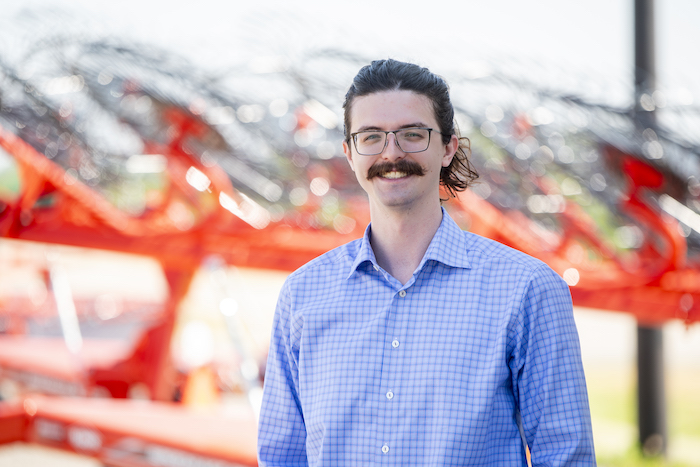In a recent webinar, Trent Hummel, consultant and trainer with the Western Equipment Dealers Assn.’s Dealer Institute, outlines key areas where dealerships can find room to generate extra cash in their wholegoods department. Hummel explains how dealers should treat their attachments, move their trade-ins and change their wholegoods mentality to be about speed.
This is the fourth in a series of articles based on Hummel’s webinar. Part 1 of this series covers how to break down expenses, part 2 of this series covers optimizing the parts department and part 3 covers billing & the service department.
Dealing with Aged Attachments, Machinery
According to Hummel, dealerships only have three good reasons to remove attachments from a used unit. If it’s junk, to sell it on its own (if it doesn’t hurt the value of the machine) or to put it on another machine to prop up that unit’s value (again without hurting the value of the original machine).
While it may seem obvious, dealers should avoid stockpiling used attachments in their yard. With the wear and tear of the elements (especially when attachments sit for several years), the condition will deteriorate to a point of being impossible to sell.
“When employees are stripping parts from an attachment kit or the attachment is full of rust and dirt, there’s no way a farmer will buy it. Everyone has attachments, which we allowed a value on, that are not worth anything because they sat too long,” he says. For the most part, attachments should never be removed.”
The biggest enemy of the wholegoods department is aging units. The longer a machine sits on a dealership yard, the lesser chance of selling it with reasonable gross margin. Worse yet, with equipment on a credit line, dealerships are paying interest, and, for the most part, interest is not recoverable. Hummel recommends dealers draft a plan to sell each aged unit, with each salesperson aiming to sell one paid-for machine each month.
“We know salesmen are sidestepping past the units that have not sold in a long time,” says Hummel. “Salesmen will bypass quoting aged units. I’ve done it myself. It becomes the sales manager’s job to address this issue. When units that are not selling well, pick up the phone, find another dealership who has machines that aren’t selling well but might work for you. Start horse trading.”
Wholesalers and auctions are also another avenue for aged equipment that’s turned into dead inventory. Auctions might be the only way to turn a difficult unit into cash, Hummel says.
Handling Shortline Trade-Ins
Trade-ins on the sale of some shortline product can get tricky. As Hummel explains, many sales departments are unaware that some shortlines do not offer trade-in equipment interest-free terms or any terms at all. For example, “If the invoice of a new grain auger is $20,000 and a customer paid $12,000 difference, the dealership has to submit the full $20,000, as there are no trade-in terms from the shortline OEM,” Hummel says. “This issue has many dealerships deciding to not take trade-ins from shortline sales.”
Hummel mentions that not all salespeople may know how their dealings with trade-ins affected the dealership cashflow. “When a deal shows 15% gross margin dollars on a sale with trade, there’s not 15% gross margin dollars staying in the store,” he says. “All the customer’s cash difference is used to pay down the initial invoice.”
Move the Same Amount of Iron More Quickly
Moving iron quickly is the key to wholegoods trade-ins, as Hummel sees it. The longer that trade-in sits on the lot, the worse it is for the dealership’s cash situation. “If a trade comes in on Monday and you can get it sold by Friday, you have improved your turns” he says. “When you get that first offer, sometimes you should take it and turn that item into cash. Maybe it’s not exactly the margin dollars you wanted, but you’ve got to be thinking about the cashflow implications of holding units.” Hummel also cautions dealerships to not wait for the trade-in to show up on the lot to start pre-selling it.
Hummel recommends what he calls a “discovery” meeting for dealing with difficult used equipment inventory. “Once a month, have a formal meeting to discuss troubling units,” he says. “Ask the team, is it priced right for the market? If we’re asking $20,000 and the market will only pay $16,000, we need to either reduce retail price to a fair market value or reduce the cost to fair wholesale value.” These meetings can also help salespeople improve their perspective when considering fair market value and market trends when appraising future trade-ins.
Hummel will be presenting a session at this year’s Dealership Minds Summit 2020 titled “Tracking Used Equipment Trends & Following the Data,” where he’ll share data tracking used combine inventory by country and by brand to unearth whether the industry is growing or reducing used combine stock.






